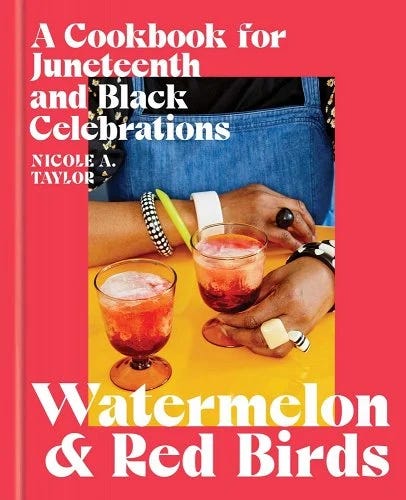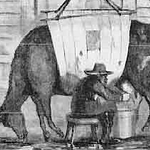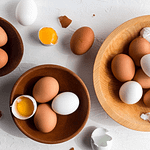It seems that the faster and more urban our lives grow, the more we seek ways and means to “return” to our roots - including the foods we eat. Realizing that he knew very little about the foodways of the Oglala Sioux community where he was raised, Chef Sean Sherman began the task of researching and sharing the ways and means of food indigenous to North America. In this episode, Kim and Leigh reflect on how his 2018 award-winning cookbook The Sioux Chef’s Indigenous Kitchen directs our focus to the foods and foodways that have been long overlooked.

(Re)Discovering Culinary Roots
Time spent with the Huichol people near Jalisco, Mexico inspired Chef Sean to examine his own Native heritage and curiosity about the foodways of his familial heritage of the Oglala Lakota of the Pine Ridge Reservation in South Dakota. After nearly two decades in the food industry, Chef Sean felt he knew more about the popular cuisines of Europe, but none of what and how indigenous people ate before European culture spanned the continent.
His research, and subsequent cookbook, mark a turning point - even a starting point - in a long overdue conversation about the actual indigenous foodstuffs of North America - the flora and fauna that sustained people before the introduction and dietary inculcation of wheat, sugar, and beef.
Expressing Cultural History and Identity
Much like other books centered on expressing cultural history and identity, The Sioux Chef’s Indigenous Kitchen gives readers the opportunities to sample food that predates European influence but without apology or accommodation. Specific ingredients may be challenging to source - hand-picked wild rice isn’t so easy to find in Kim’s neighborhood grocery chain - but they do reflect the type of seasonal eating and nose-to-tail ethic that has appealed to us this season.
And since North America’s indigenous people are not a homogenous group - there are 574 federally-recognized Native American and Alaska Native groups in the United States plus others that remain unrecognized - there are additional resources available to readers interested in other indigenous foodways.
Finally, a chapter introducing Full Moon ritual menus offers insights and recommendations to novices and experts alike on what to eat when and sublimates recipes from mere dishes into a full cultural experience.
What has been your experience been with indigenous foods?
Episode Transcript
🎧 Click here for the full, interactive transcript of this episode 🎧
Sources We Found Helpful for this Episode
Books We Think You’ll Enjoy Reading
The Sioux Chef’s Indigenous Kitchen by Sean Sherman and Beth Dooley
New Native Kitchen: Celebrating Modern Recipes of the American Indian by Freddie Bitsoie and James O. Fraioli
tawâw: Progressive Indigenous Cuisine by Shane M. Chartrand
Recovering Our Ancestors' Gardens: Indigenous Recipes and Guide to Diet and Fitness (At Table) by Devon Abbott Mihesuah
Recipes You Really Need to Try
Corn Husk Bread from The Sioux Chef
Sean Sherman’s 10 Essential Native American Recipes from The New York Times
Owamni Sweet Potatoes with Maple-Chile Crisp from Food & Wine
Episodes We Think You’ll Like
EP 55 Refinding Home: Edna Lewis, The Taste of Country Cooking, and Me
Listen now (30 mins) | As We Eat’s third season highlights some of our favorite cookbooks and the roles that they play in our understanding and expression of community, identity, and personal and communal foodways. We start with a great American classic: The Taste of Country Cooking by Chef Edna Lewis - a nostalgic but compelling mediation on what it means to eat seasonally a…
EP 63 Time to Eat: Food Traditions, Summer Celebrations, and Rethinking Red
Listen now (25 mins) | Summer is full of reasons to celebrate - either for our personal victories of graduation or fatherhood but also on a more profound scale with federal holidays like Independence Day. In this new episode of As We Eat, Kim and Leigh explore how one author is not only bringing attention to the food traditions of Black celebrations like Juneteenth, but also …
Join us in two weeks when Leigh share’s a recipe from The Sioux Chef’s Indigenous Kitchen featuring the Three Sisters. If you’re enjoying the podcast, we would love to have you join our supporting subscribers. For just a few dollars, you can get access to exclusive content, including the Recipe Box Roulette “card game”, more in-depth articles, and recipes. You’ll also help keep our oven lights on!
We would love to connect with you
AsWeEat.com, on Instagram @asweeat, join our new As We Eat community on Facebook, or subscribe to the As We Eat Journal.
Do you have a great idea 💡 for a show topic, a recipe 🥘 that you want to share, or just say “hi”👋🏻? Send us an email at connect@asweeat.com
Review As We Eat on Podchaser or Apple Podcast. We would like to know what you think.
Thank you for listening to the As We Eat Podcast. This post is public so share it with a friend - or three :)

























Share this post